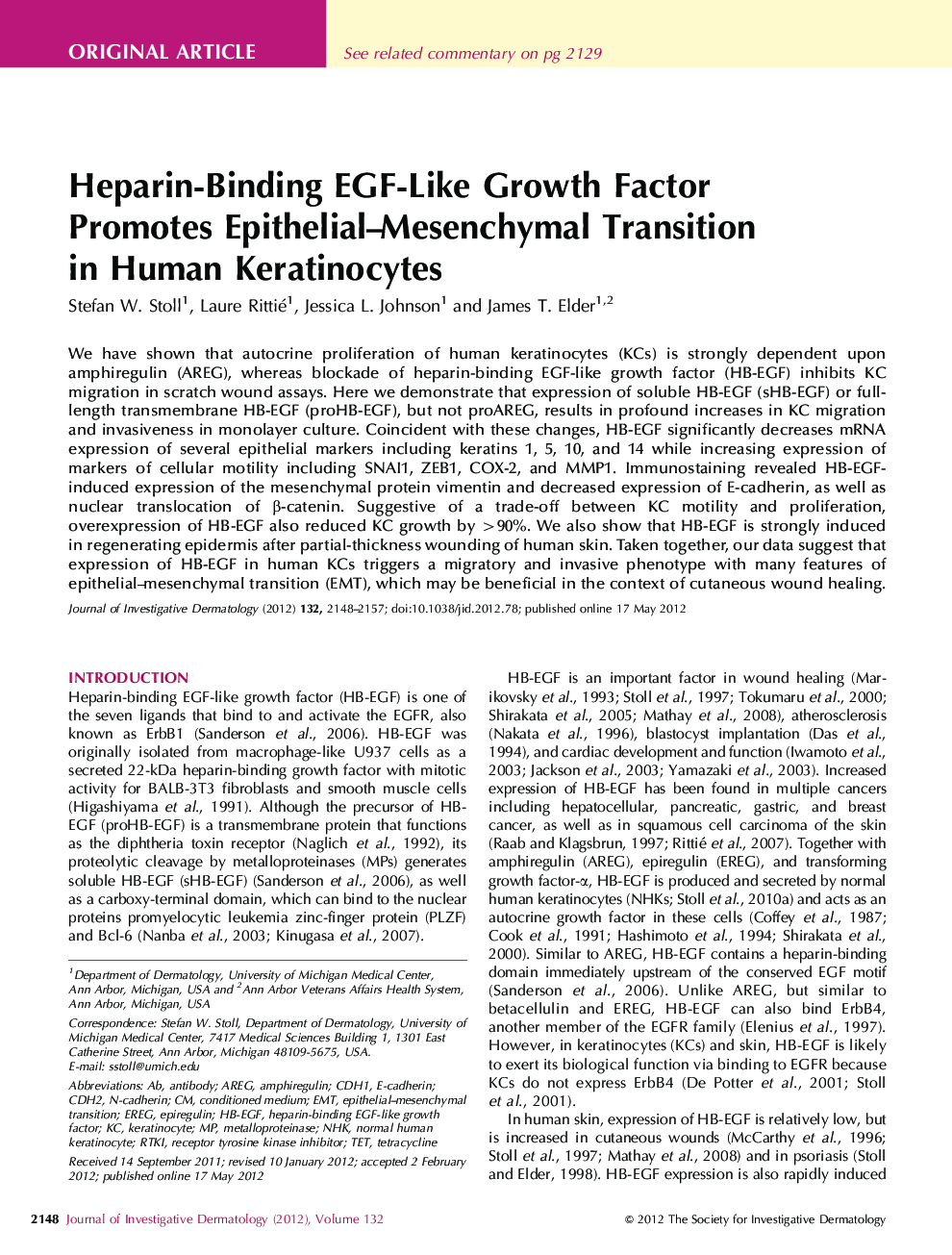| Article ID | Journal | Published Year | Pages | File Type |
|---|---|---|---|---|
| 6077534 | Journal of Investigative Dermatology | 2012 | 10 Pages |
Abstract
We have shown that autocrine proliferation of human keratinocytes (KCs) is strongly dependent upon amphiregulin (AREG), whereas blockade of heparin-binding EGF-like growth factor (HB-EGF) inhibits KC migration in scratch wound assays. Here we demonstrate that expression of soluble HB-EGF (sHB-EGF) or full-length transmembrane HB-EGF (proHB-EGF), but not proAREG, results in profound increases in KC migration and invasiveness in monolayer culture. Coincident with these changes, HB-EGF significantly decreases mRNA expression of several epithelial markers including keratins 1, 5, 10, and 14 while increasing expression of markers of cellular motility including SNAI1, ZEB1, COX-2, and MMP1. Immunostaining revealed HB-EGF-induced expression of the mesenchymal protein vimentin and decreased expression of E-cadherin, as well as nuclear translocation of β-catenin. Suggestive of a trade-off between KC motility and proliferation, overexpression of HB-EGF also reduced KC growth by >90%. We also show that HB-EGF is strongly induced in regenerating epidermis after partial-thickness wounding of human skin. Taken together, our data suggest that expression of HB-EGF in human KCs triggers a migratory and invasive phenotype with many features of epithelial-mesenchymal transition (EMT), which may be beneficial in the context of cutaneous wound healing.
Related Topics
Health Sciences
Medicine and Dentistry
Dermatology
Authors
Stefan W. Stoll, Laure Rittié, Jessica L. Johnson, James T. Elder,
